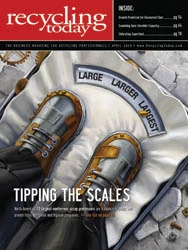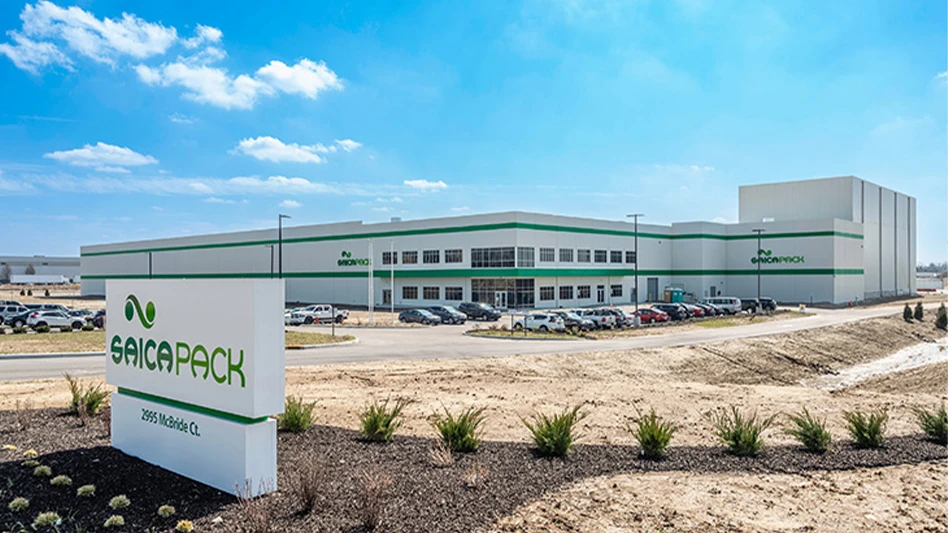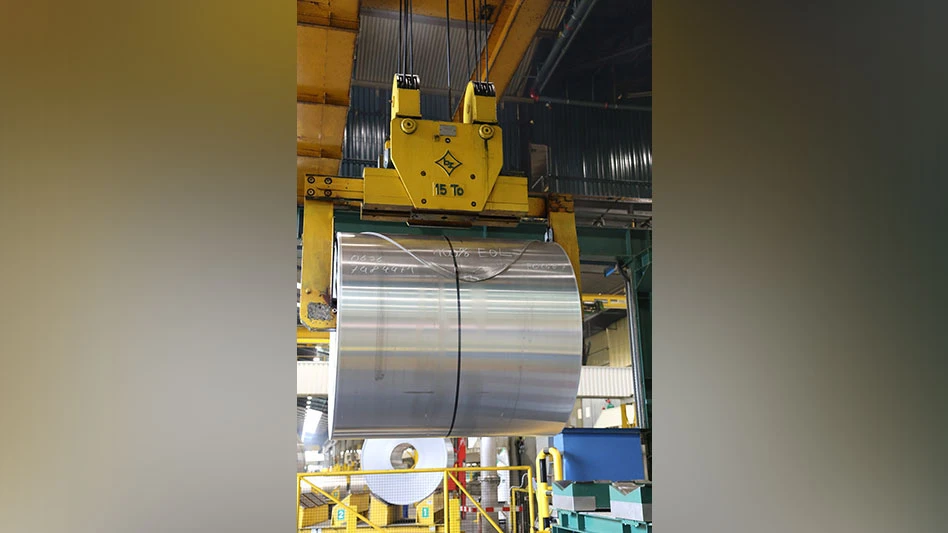The undeniable benefits of recycling scrap tires have become clouded in recent years by unfounded claims that recycled rubber may be harmful to people and the environment.
But a study by the U.S. Environmental Protection Agency has finally resolved the debate: Recycled tire material is safe.
Crumb rubber is used in a number of innovative applications, including synthetic turf athletic fields, decorative landscaping and playground safety surfacing. And the use of tire crumb materials for playgrounds and turf fields provides numerous benefits. First, it cushions falls, reducing sports injuries when compared with other playground or athletic surfaces. Second, synthetic turf is a low-maintenance alternative to natural grass because it does not need water, fertilizers or pesticides.
The increasing popularity of this versatile and high-performance raw material naturally led to a number of concerns, primarily focused on the effect of crumb rubber on children and the environment. Media reports indicate that parents had become alarmed when their children returned home with tire crumb particles on their clothing after using playgrounds and turf fields.
In response, EPA Region 8, Denver, asked several EPA program offices to help understand the extent of crumb rubber recreational uses, fill critical data gaps and assess available reports to determine if there is any exposure to risk, particularly to children.
The workgroup requested that a smaller science workgroup familiar with planning and conducting environmental field studies be formed to consider the quality of the current science and make recommendations regarding the need for future research.
An agency-wide workgroup was formed that included representatives from various policy, scientific and communications staffs, including the agency’s Office of Children’s Health Protection and Environmental Education, the Office of Pollution Prevention and Toxic Substances, the Office of Solid Waste and Emergency Response, the Office of Research and Development and several EPA regional offices.
Similar to the conclusions reached by as many as 100 state-level studies, according to the EPA study, crumb rubber used in these applications poses no significant health or environmental risks.
“BELOW LEVELS OF CONCERN”
The EPA conducted the field study from August through October 2008, collecting air and wipe samples from multiple locations in different parts of the country. The study was proposed, designed and recommended by the workgroup as a means to evaluate readily available methods and to generate consistently collected U.S. data that could be used to help inform decisions regarding possible next steps. In short, the study was intended to complement data collected or planned for collection by other state and federal agencies.
“The limited data the EPA collected during this study, which did not point to a concern, represents an important addition to the information gathered by various government agencies,” says Peter Grevatt, director of the EPA’s Office of Children’s Health Protection.
The data the EPA collected came from synthetic turf fields and playgrounds, which revealed that the concentrations of components monitored in the study were below levels of concern. Particulate matter, metals and volatile organic compounds (VOCs) were measured in air samples and compared with areas away from the crumb rubber, where the results were similar.
No tire-related fibers were observed in the air samples, and all air concentrations of particulate matter and lead were below levels of concern, according to the study’s findings. More than 90 percent of the lead in the tire crumb material was tightly bound and unavailable for absorption by people. And zinc, which is a known tire additive, was found to be below levels of concern in air and surface wipe tests. Extractable metals from turf field blades, tire crumb materials and turf field wipe samples were low. Although there are no standards for lead in recycled tire material or synthetic turf, the average concentrations were well below the EPA standard for lead in soil and residential floor dust. All VOCs were measured at extremely low concentrations, which is typical of ambient air.
The EPA report is a welcome validation of the results of continuous studies and tests conducted during the past few years. Recycled rubber used in consumer applications such as synthetic turf and playground safety surfacing is safe.
A review of available scientific literature sponsored by the Rubber Manufacturers Association, Washington, D.C., last year found no significant negative effects to health or to the environment from artificial turf made of crumb rubber.
The EPA study simply adds one more volume to a large collection of information that presses the same point: Products made from recycled rubber tires are safe.
MYTHS VERSUS FACTS
Myths purporting the alleged harmful effects of crumb rubber are many, but evidence to support these claims as fact appears nonexistent. Public speculation has led to scientific scrutiny, which has continually absolved crumb rubber from this false condemnation.
Studies have proven that crumb rubber poses no significant health risks. Every day, across the nation, professional athletes compete on turf comprised of crumb rubber, and children play on recycled rubber safety surfacing. And as scientists study these fields and playgrounds, the persistent myths are dispelled and replaced by the following facts.
FACT: Exposure to crumb rubber does not cause cancer.
A January 2007 study by the California EPA determined that playing on an athletic field made partially of crumb rubber is not a significant risk factor for cancer.
FACT: Ingesting dust from artificial turf that contains crumb rubber is not harmful.
A March 2009 study prepared for the New York City Department of Health and Mental Hygiene found no significant health risk to people who breathe the air above synthetic turf containing crumb rubber.
FACT: Athletes are not more susceptible to Staph or MRSA (methicillin-resistant Staphylococcus aureus) infections on synthetic turf athletic fields.
Two separate studies from Pennsylvania State University found no evidence to suggest that athletes who play on synthetic turf are at greater risk of contracting a bacterial infection.
FACT: Crumb rubber does not contain an unsafe level of lead.
Consumer Product Safety Commission regulations that take effect in 2010 set a ceiling for lead content in any consumer product—a maximum of 100 parts per million (ppm). Frequent tests of crumb rubber products have yielded results that are below 50 ppm.
Beyond the persistent myths relating to health risks, there is false information circulating that crumb rubber is a detriment to the environment. But again, numerous studies have busted these myths.
FACT: Athletic fields made of synthetic turf do not leach dangerous chemicals into the ground.
A joint May 2009 study by the Department of Environmental Conservation and the Department of Health in New York found that crumb rubber used in synthetic turf fields poses no significant environmental threat.
FACT: Tires and crumb rubber products are not classified as hazardous waste.
The U.S. EPA has never classified tires or crumb rubber as hazardous waste.
Separating the myths from hard, scientific fact is important because parents, business owners, public policy makers and elected officials deserve to know the truth about recycled rubber and the environmental and functional benefits of crumb rubber products.
Sponsored Content
Labor that Works
With 25 years of experience, Leadpoint delivers cost-effective workforce solutions tailored to your needs. We handle the recruiting, hiring, training, and onboarding to deliver stable, productive, and safety-focused teams. Our commitment to safety and quality ensures peace of mind with a reliable workforce that helps you achieve your goals.
Sponsored Content
Labor that Works
With 25 years of experience, Leadpoint delivers cost-effective workforce solutions tailored to your needs. We handle the recruiting, hiring, training, and onboarding to deliver stable, productive, and safety-focused teams. Our commitment to safety and quality ensures peace of mind with a reliable workforce that helps you achieve your goals.
Sponsored Content
Labor that Works
With 25 years of experience, Leadpoint delivers cost-effective workforce solutions tailored to your needs. We handle the recruiting, hiring, training, and onboarding to deliver stable, productive, and safety-focused teams. Our commitment to safety and quality ensures peace of mind with a reliable workforce that helps you achieve your goals.
Sponsored Content
Labor that Works
With 25 years of experience, Leadpoint delivers cost-effective workforce solutions tailored to your needs. We handle the recruiting, hiring, training, and onboarding to deliver stable, productive, and safety-focused teams. Our commitment to safety and quality ensures peace of mind with a reliable workforce that helps you achieve your goals.
Sponsored Content
Labor that Works
With 25 years of experience, Leadpoint delivers cost-effective workforce solutions tailored to your needs. We handle the recruiting, hiring, training, and onboarding to deliver stable, productive, and safety-focused teams. Our commitment to safety and quality ensures peace of mind with a reliable workforce that helps you achieve your goals.
Sponsored Content
Labor that Works
With 25 years of experience, Leadpoint delivers cost-effective workforce solutions tailored to your needs. We handle the recruiting, hiring, training, and onboarding to deliver stable, productive, and safety-focused teams. Our commitment to safety and quality ensures peace of mind with a reliable workforce that helps you achieve your goals.
Sponsored Content
Labor that Works
With 25 years of experience, Leadpoint delivers cost-effective workforce solutions tailored to your needs. We handle the recruiting, hiring, training, and onboarding to deliver stable, productive, and safety-focused teams. Our commitment to safety and quality ensures peace of mind with a reliable workforce that helps you achieve your goals.
SAFE AND SOUND
The improved function and long-lasting characteristics of recycled rubber bring a quality and rate of performance that is otherwise missing from traditional products. And the use of recycled rubber provides the added benefit of reaching conservation goals.
Synthetic turf fields made of crumb rubber save money and the environment by conserving as much as 50,000 gallons of water per week during the peak growing season and by avoiding the use of dangerous herbicides and pesticides.
Recycled rubber mulch for landscaping and playground applications saves time and money by reducing the number of applications. Rubber mulch does not erode, rot or attract mold and insects as wood mulch could. And recycled rubber mulch potentially saves trees from the shredder. Synthetic turf and recycled rubber mulch reduce injuries to athletes and children. For athletes, crumb rubber additive increases the resiliency of a field, improves drainage and enables better grass root structure.
And on playgrounds, a 6-inch layer of rubber mulch can cushion a child’s fall from as high as 12 feet compared with 6 feet for wood mulch.
As manufacturers discover the inherent value of recycled rubber’s properties and embrace the environmental impact of recycling, scrap tires are becoming a raw material in more products.
Though concern on the part of parents and government officials is natural, the overwhelming amount of scientific evidence accumulating every day expresses broad support for the EPA’s conclusion that recycled rubber does not affect people’s health nor does it affect the environment.
Additionally, the numerous benefits of recycled rubber—long-lasting properties, high performance, reduced environmental impact—have become indispensable for a litany of applications, from synthetic grass fields and landscaping mulch to molded rubber products and rubberized asphalt.
As the world evolves, finding new and innovative ways to reuse discarded materials will serve the dual purpose of creating better products and preserving our environment.
The future of manufacturing is dependent on recycled materials, and crumb rubber is a proven commodity: proven reliable, proven safe.
Get curated news on YOUR industry.
Enter your email to receive our newsletters.

Explore the April 2010 Issue
Check out more from this issue and find your next story to read.
Latest from Recycling Today
- Green Cubes unveils forklift battery line
- Rebar association points to trade turmoil
- LumiCup offers single-use plastic alternative
- European project yields recycled-content ABS
- ICM to host colocated events in Shanghai
- Astera runs into NIMBY concerns in Colorado
- ReMA opposes European efforts seeking export restrictions for recyclables
- Fresh Perspective: Raj Bagaria






